
The origins of Yeamans Hall go back to Sir John Yeamans, 3rd Governor of South Carolina. Yeamans Hall as depicted in a 1864 painting by R Knox, a prisoner of war. I believe this building was destroyed in a fire caused by an earthquake in 1886. In tatters, by 1900 the plantation was sold.


Some may consider the Great Depression a lucky break for the Yeamans Hall Club. 235 homes and 36 holes of golf were originally planned, but given the circumstances of 1929, not long after after Seth Raynor completed the course (with the help of Charles Banks), it was thought prudent to limit the development to 18 holes and 35 homes on a sprawling 900 acre estate. These homes and indeed the entire property are owned by 35 proprietary members. It would seem the mantra of the owners is to retain the charm and ambience created by Seth Raynor and the Olmsted Brothers over 85 years ago. The Olmsted Plan below.
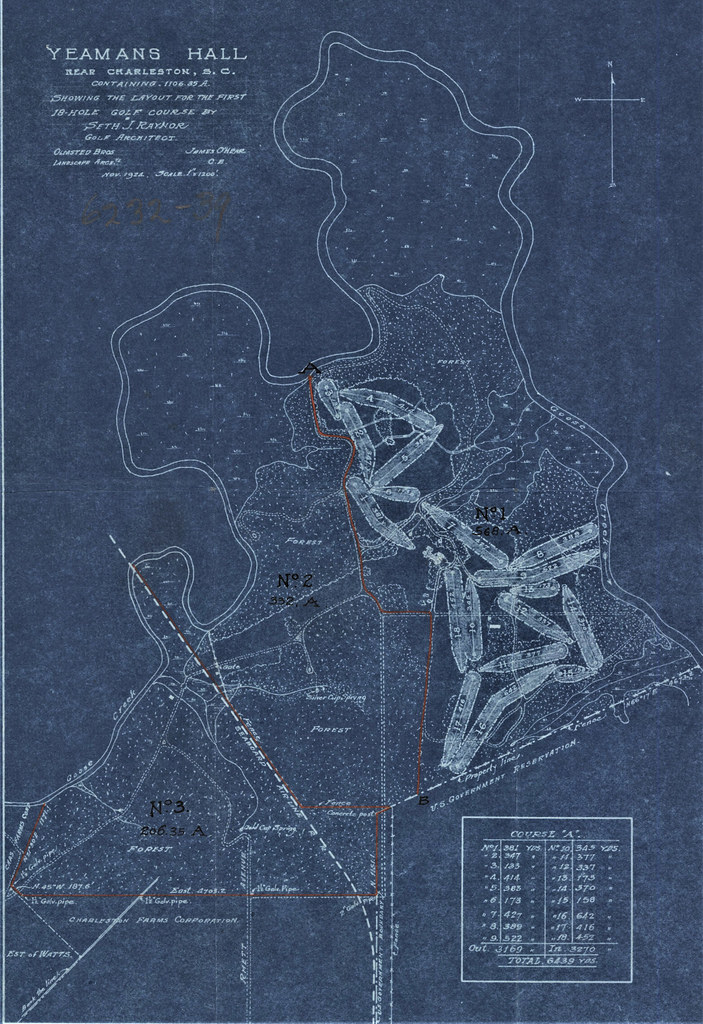
Over the years the club remained in a secluded slumber until Hurricane Hugo hit in the fall of 1989. The clubhouse, guest cottages, homes and course were badly damaged and required substantial repair. At this time the club took the decision to renovate the course. The Raynor Fund was created and with the plans discovered by Jim Yonce in the 1990s, Tom Doak was hired to breath life back into the course. This work continued through 2009 and beyond.
My overall impression is that YHC feels far more English than American. One course in particular it reminds me of is Beau Desert. This is mostly due to the bold greens (often built up), bunker shapes and placement. Though, Raynor placed far more bunkers than I think Fowler would have ever dreamed. I know little about the work of the man who helped Raynor complete the course, one Charles Banks, could it be that he is partly responsible for the preponderance of greenside sand? In fact, the use of bunkers, or what I would call over-use, is one of the few criticisms I have of YHC. To be specific, the bunkering around the greens was a bit predictable. Often times, at least one left and right plus a hidden bunker or two in the rear or further back on the sides. That said, for the most part, the bunkering in the fairways was very smartly placed and varied. The course has large areas of flatness or gentle slopes, but it also has significant movement on a handful of holes - making for a pleasant walk. Most of the action of YHC is around the greens and they are tricky! Many are built up into a mini-volcano style and often times a built up ridge bisecting the green creates a false front situation. It isn't just the contours and raised nature of the greens, the shapes also are ingenious and provide for a multitude of hole locations and varied angles to access the holes. In short, Yeaman's greens are a sight to behold.
The opening tee shot seems harmless enough. The hole leans right, but centre of the fairway just short of a road works nicely. Anything too far right in the rough has an impaired view of the green due to a fairway bunker - which was a compelling element of the fairway bunkers I really liked and it reminded me of Little Aston. Too far left means the meat of a freakish green must be dealt with. When I say freakish I really mean it. In the left of the green is a huge mound which once seen is a shock to the system. Especially when you consider that most of the greens are raised externally as it were with bunkers down the sides. Not this one!
The definition of the green doesn't reveal itself until the golfer is much closer. A sense of the scale of the green is revealed in the photo below.
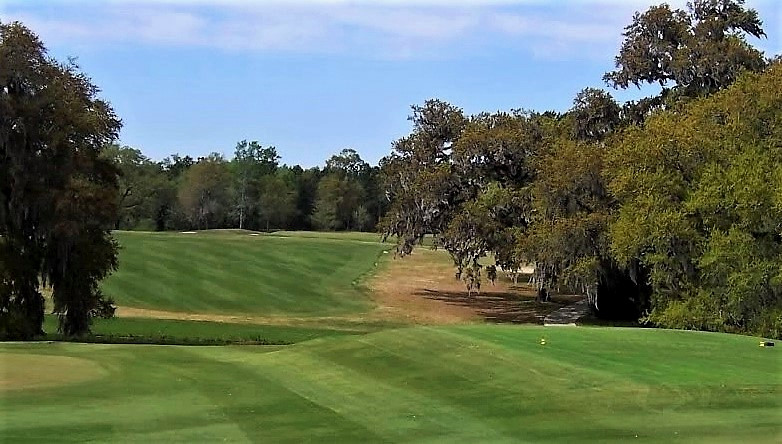
A closer look at this most remarkable green.
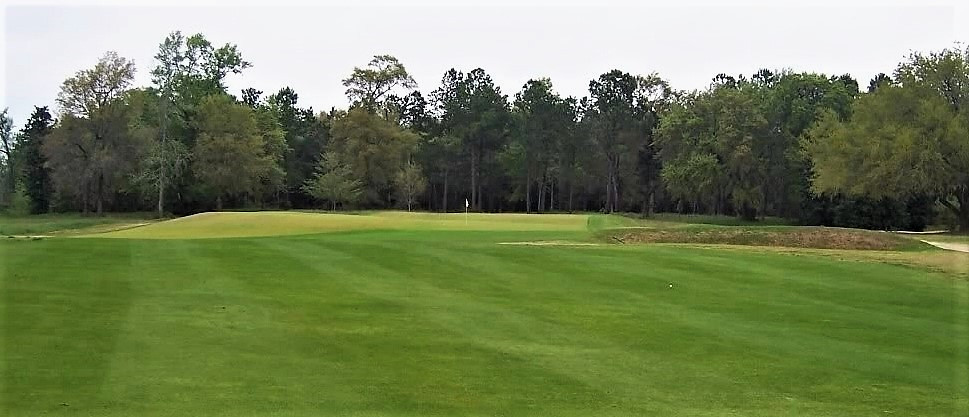
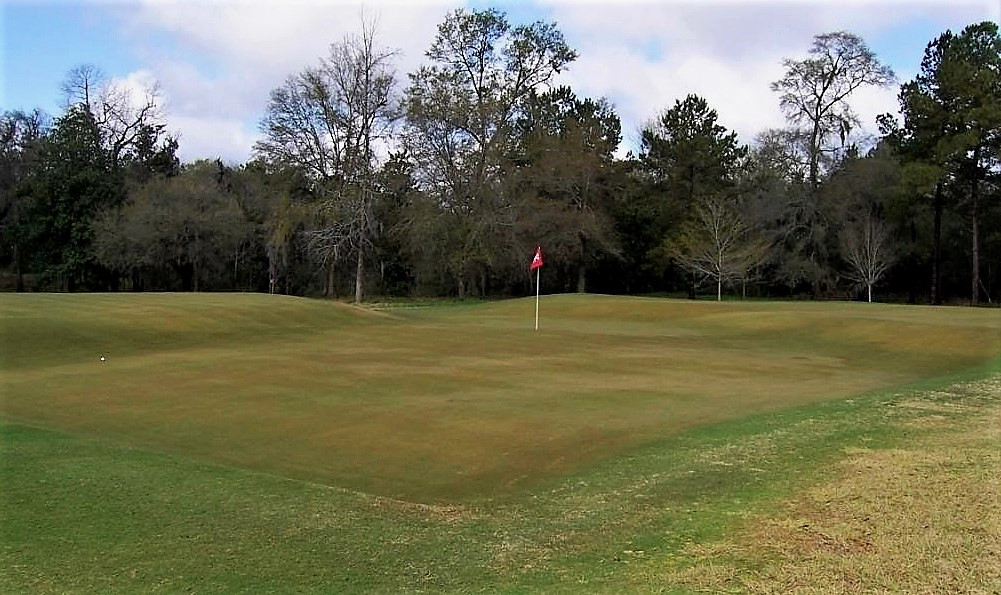
The 1st green from the 2nd tee. Also notice the condition of the rough. Length isn't an issue - its the hit and miss condition of the lie which is of most concern. I really like this aspect of chance and it is also a reason why I wasn't so keen on many of the greenside bunkers. The lie in the bunkers was very predictable and often times easier to deal with.
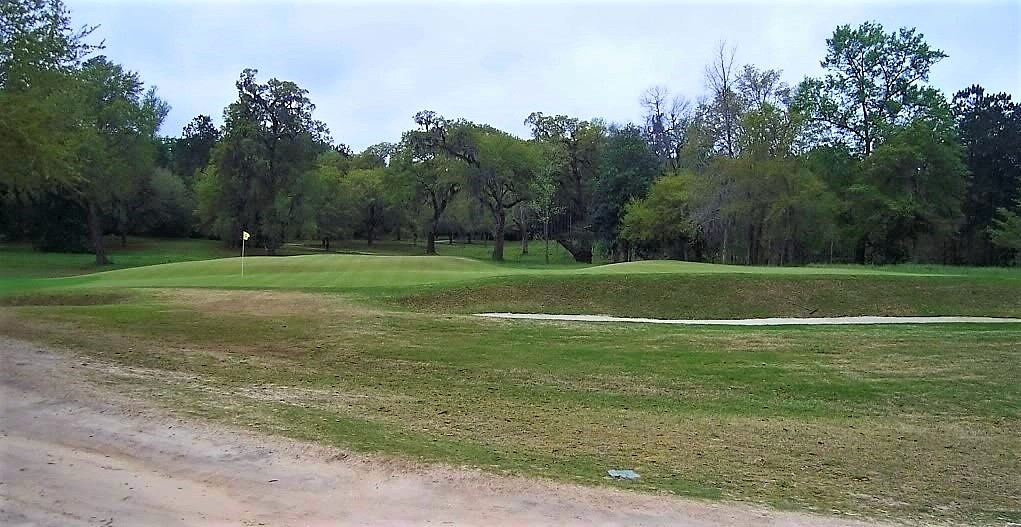
The second is a short two-shotter turning left around trees and with bunkers guarding the right side off the tee. A prudent play of laying up leaves not much more than an 8 iron. Often times the player can see the general movement of the green without seeing the details - especially if one pays attention to others approaching. In this case of the second, the green flows a bit right, being more pronounced if one doesn't get it back to the hole. Below is the approach.
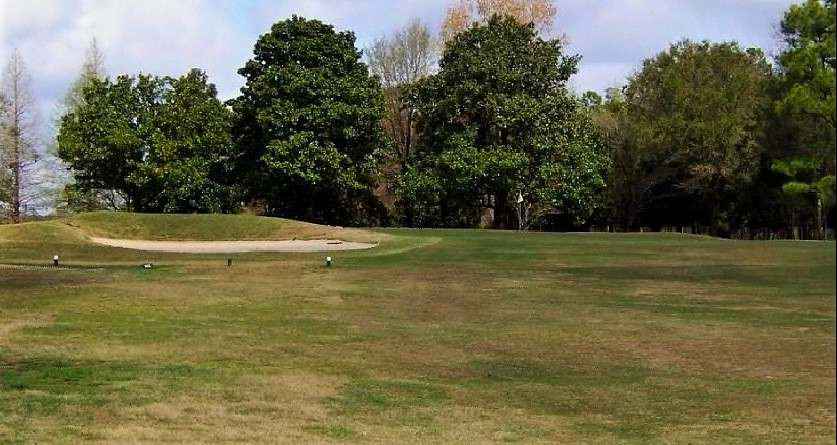
The Short, or #3, features the trademark Raynor funky horseshoe depression in the centre of the green. I don't find this version of the template particularly good despite the wonderful setting. An aspect of this geometric design which I find intriguing are the various banks which can be used as ramps.
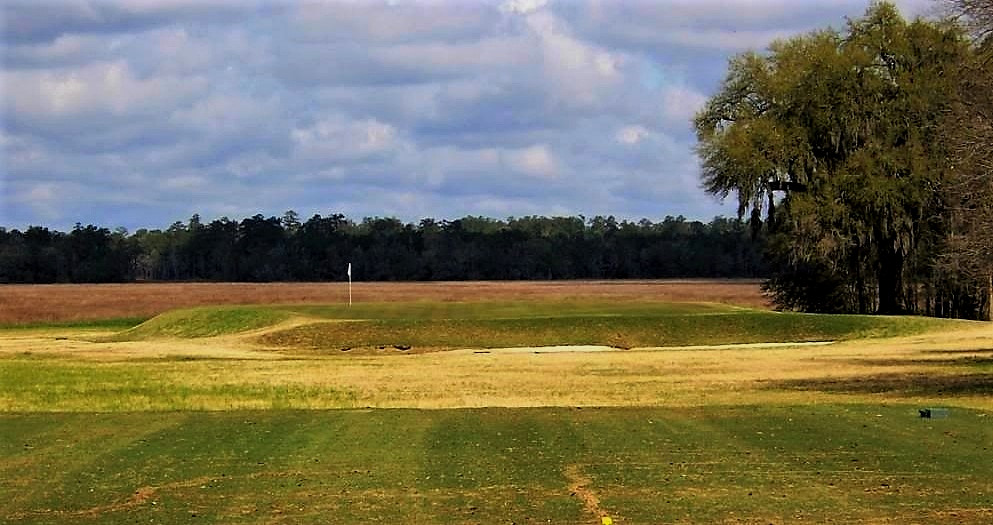
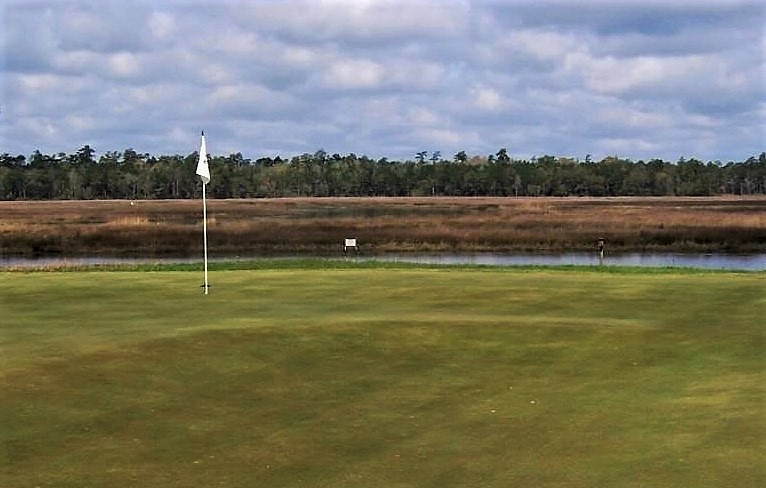
For the most part, the landing zones are generous and reward proper ball placement. Proper placement often means getting into a position whereby the player attacks the odd ridges traversing greens head on. Otherwise, these ridges can act as deflectors. A look at the green from the proper side of the fairway.
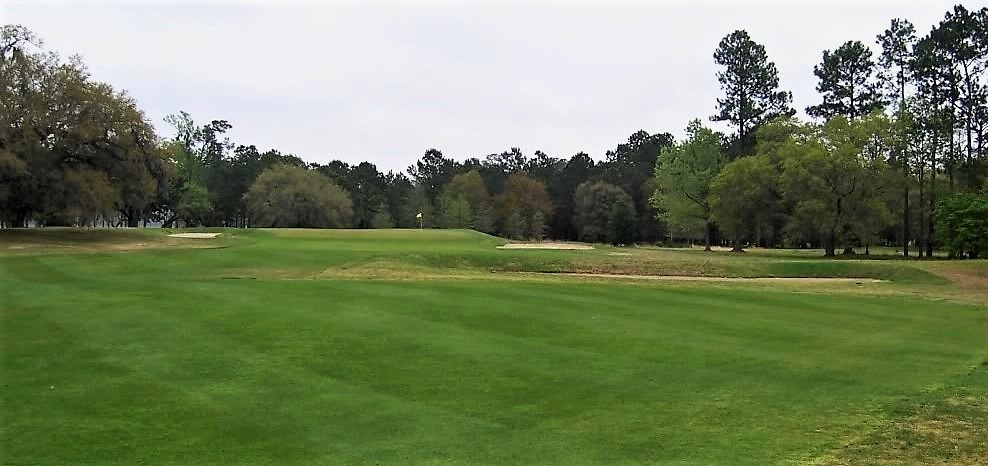
From this distance one can see the shedding nature of the front ridge.
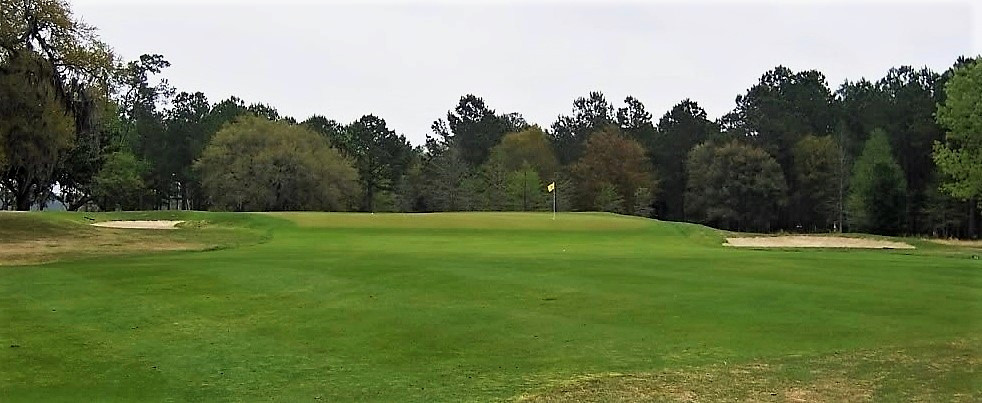
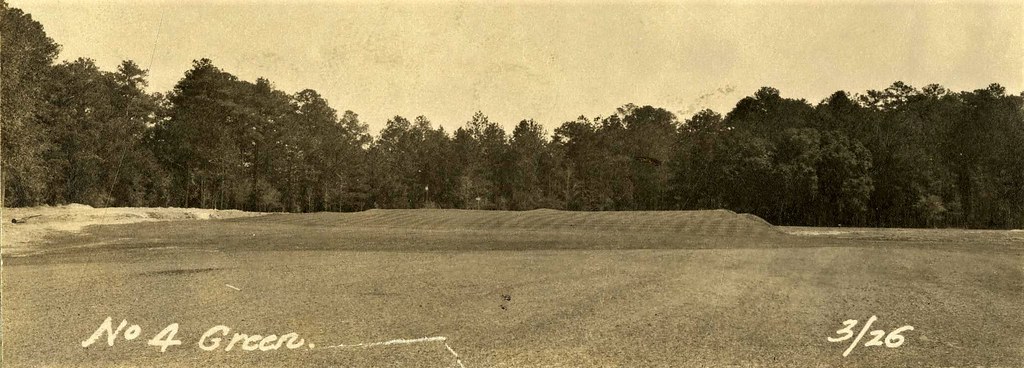
The 5th or Alps hole cannot be mistaken for Prestwick's daring contribution to design, but it is an excellent hole in its own right. The bunkers do cause some partial blocking of the green and in this respect they serve once againt serve the dual purpose role again of being a visual and playing hazard - a theme which is often used at YHC.
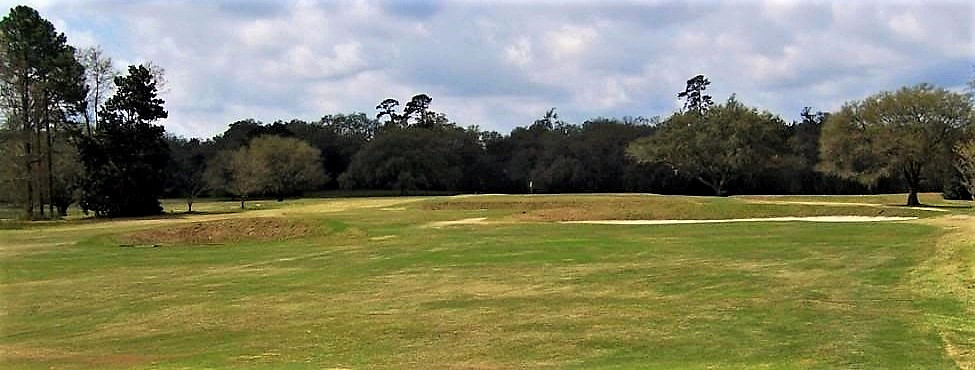
A look at the approach after a lay-up second. There isn't a good way to outflank the sand.
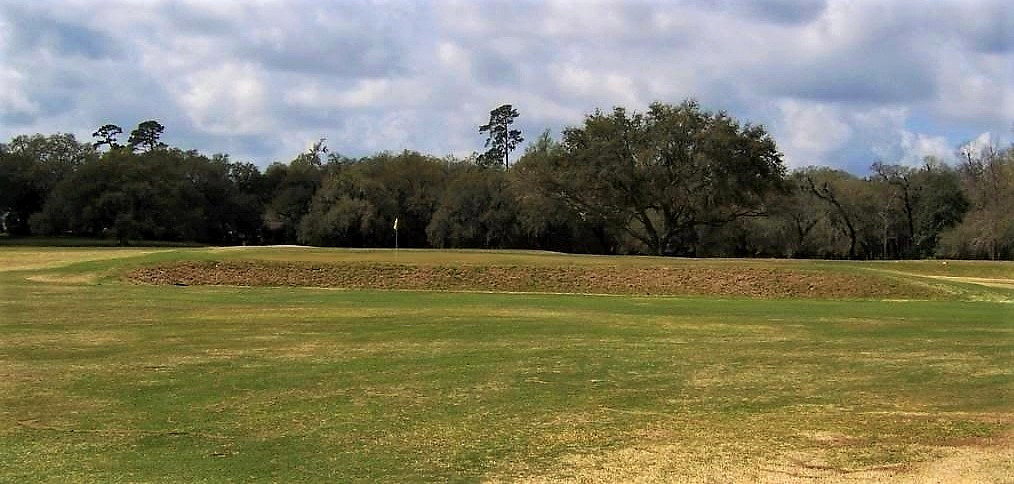
We next come to what may be the best hole on the course. The Redan 6th is certainly the best par 3 at YHC and I think it is one of the very best one-shotters I have seen.
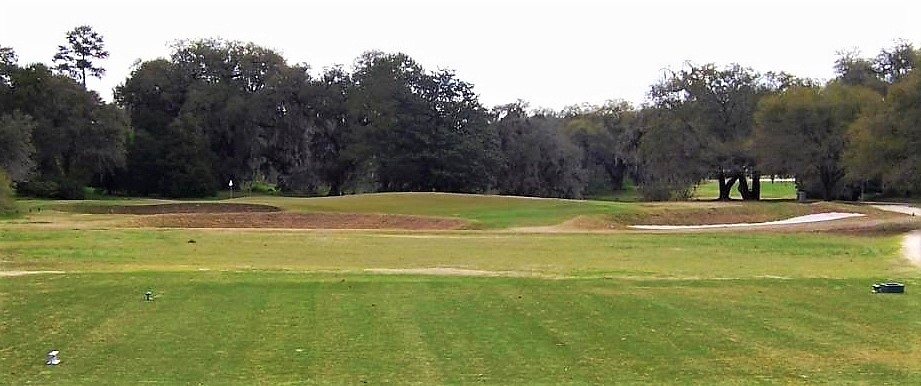
Because the green turns far sharper than one would normally associate this version has rear rather than wing bunkers.
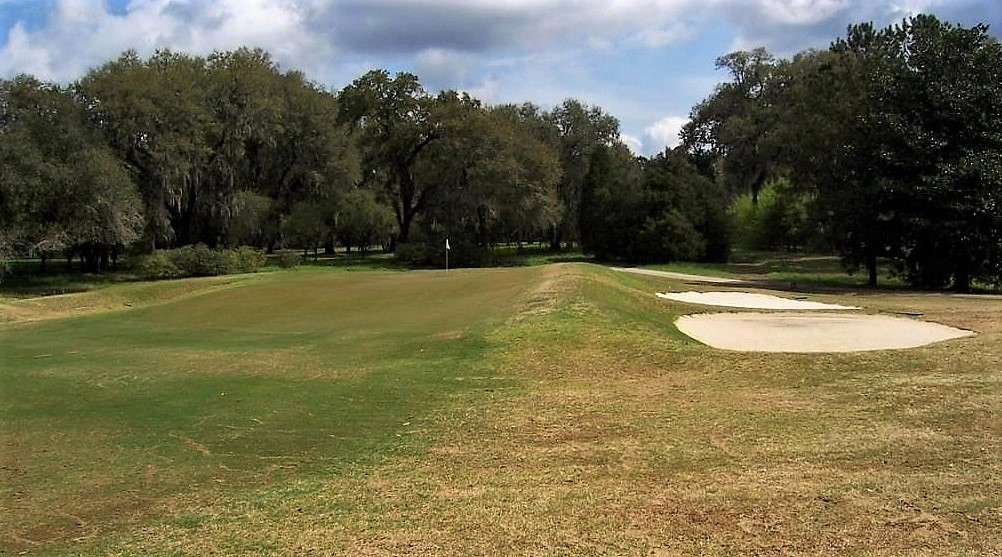

After facing 4, 5 and 6, one would have thought Raynor would have eased up for #7 - not so. The Road Hole plays uphill and quite long and the green is very severe. The left bunker is a much longer carry than it appears so this hole really is a thread the needle job unless you are a flat belly. The ridge sheds balls in both directions.
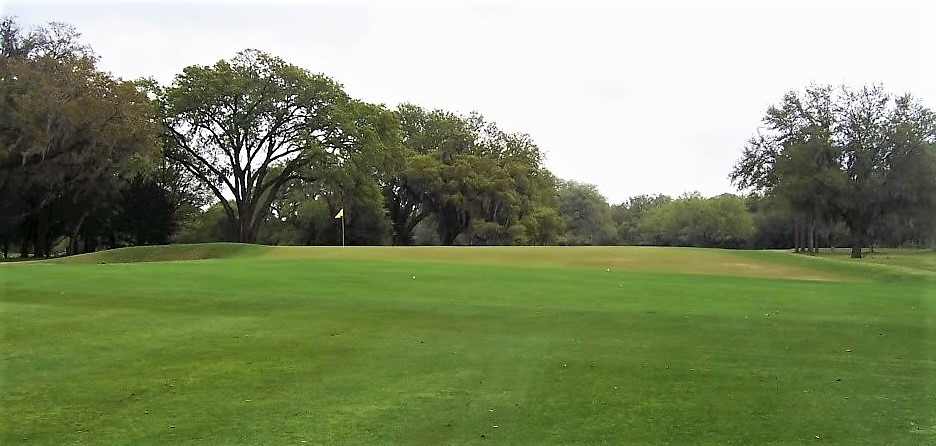
Good golf continues with the 8th. We finally have a hole where the terrain at least partially defines the drive. It is best to stay left, but the fairway gathers right to the low side leaving a more difficult approach to a green moving generally to the left. Not only does one have to carry the bunker to gain the left side of the fairway, the edge of the left side acts a hogs back and anything turning left will probably spill down toward the trees. I found myself flag hunting more than once in trying to get myself to a relatively easy two putt position because of the difficulty of the greens. More often than not this led to short siding myself. This is a photo from just in front of the ladies tee.
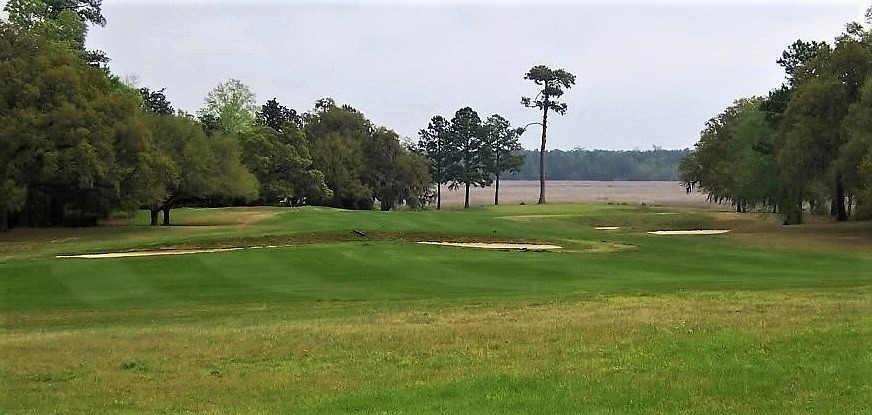
Yeamans really shines on the holes when the land is more dynamic.
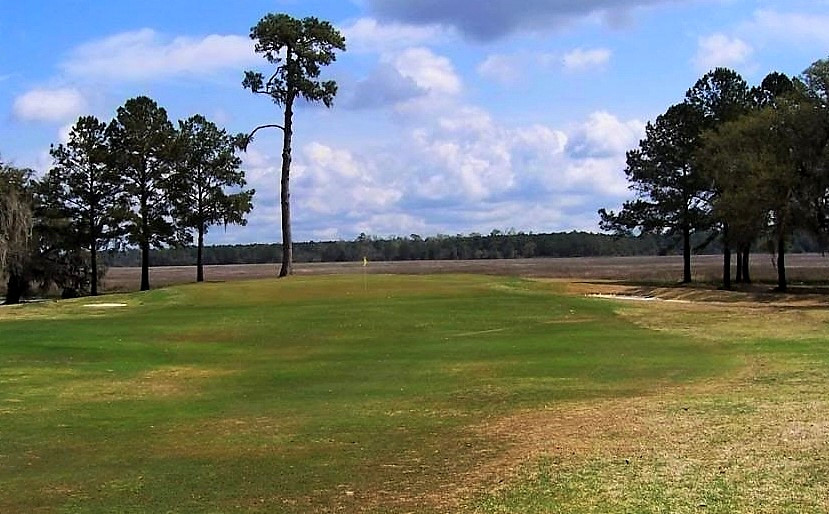

The front 9 closer features a great hazard which must be negotiated in one form or another if the player hopes to earn a routine 5.
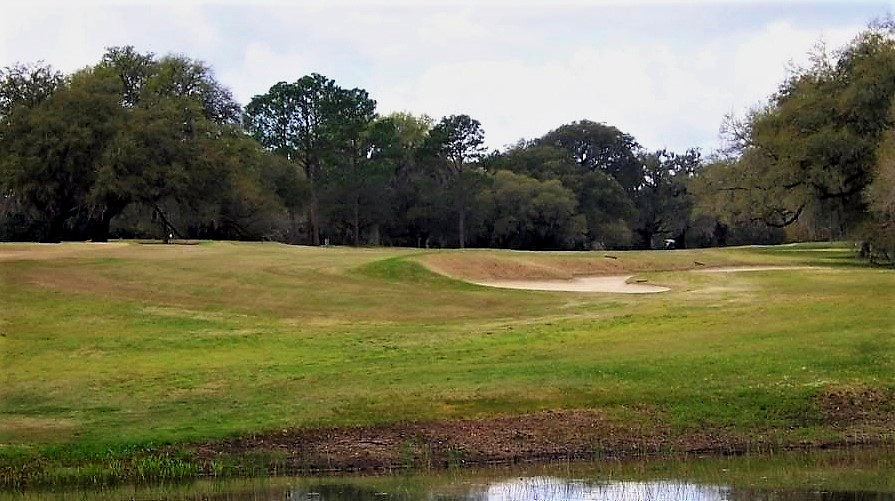

While one must pull off the heroic drive, the remainder of the hole doesn't really excite as we move back into flatter territory. The semi volcano greens I spoke of earlier is evident for the 9th green which lays wonderfully across the terrain.
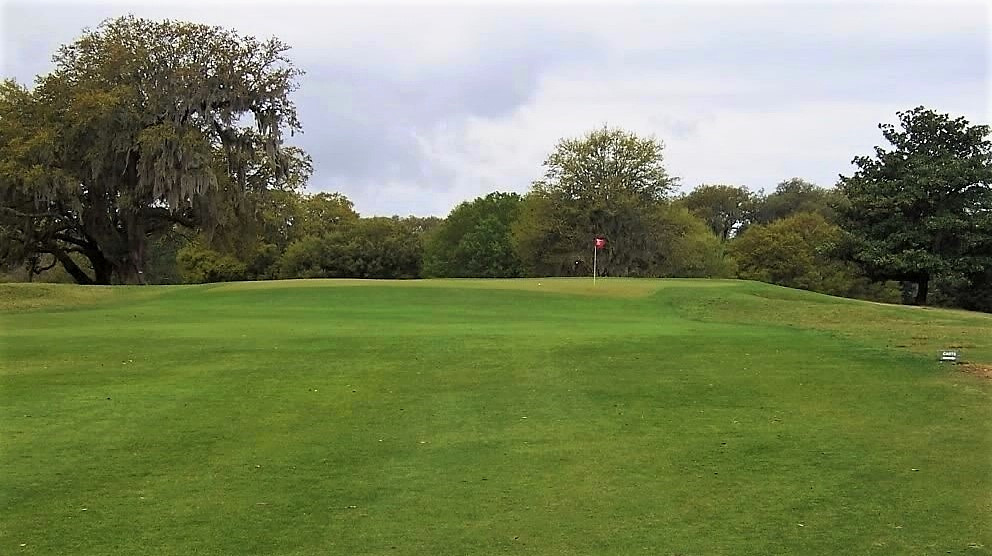
The back 9 opens with a short par 4 which is deceptively close to the house. I like how the land moves left, but it is best to stay centre/right for the approach. Another example of great fairway bunkering. The approach is a cracker and one of the more attractive on the course. Again, notice how a ridge is formed between the bunkers which essentially creates a false front and thus means to avoid this trouble caused by this feature its best to stay centre-right off the tee. I don't think I have ever seen the design trait utilized so much as at Yeamans. This ridge effectively turns a green light hole into one which should be approached with caution for all is not what it seems.
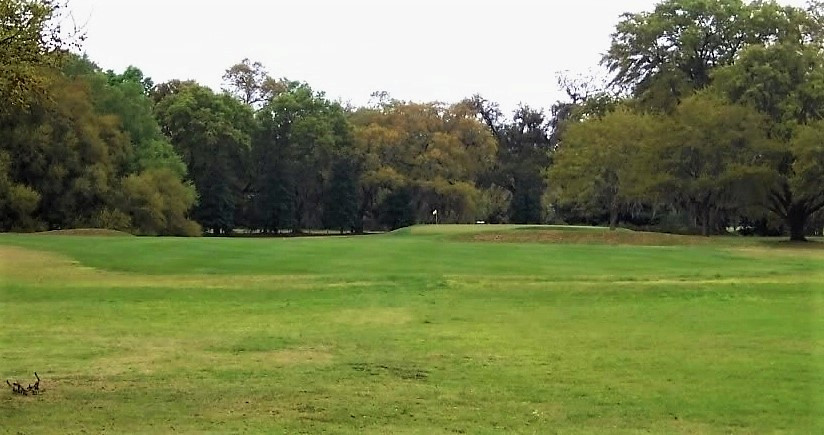
One can see from the old photos that time has softened some hard edges of the original design.

#11 is somewhat similar to the 8th in that staying left is best, but the land pushes the ball right. What is different is that to gain a view of the green one must hit a long drive down the left. Anything right leaves a blind approach - more bunker obscuring. The two balls in the photo leave blind approaches. You will notice that this green is raised. By now, I was wondering if there were any grade levelish greens on the course other than #1. Like the bunkering of the greens, I would have liked to see a bit more variety in green sites.
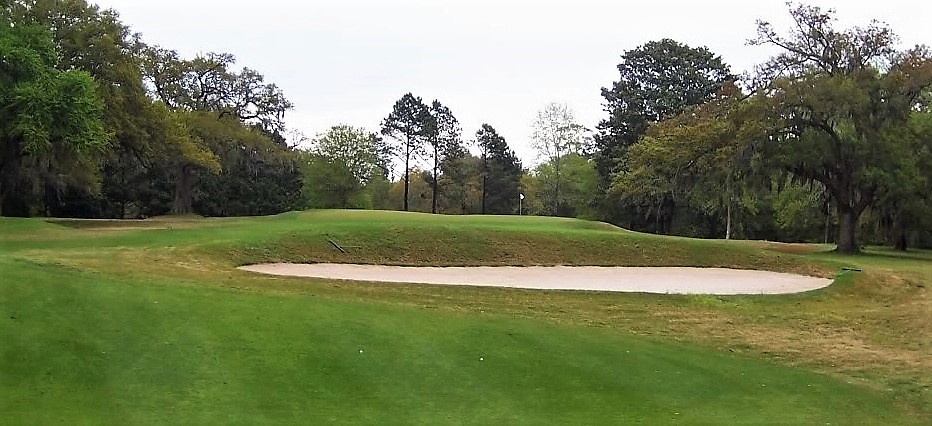
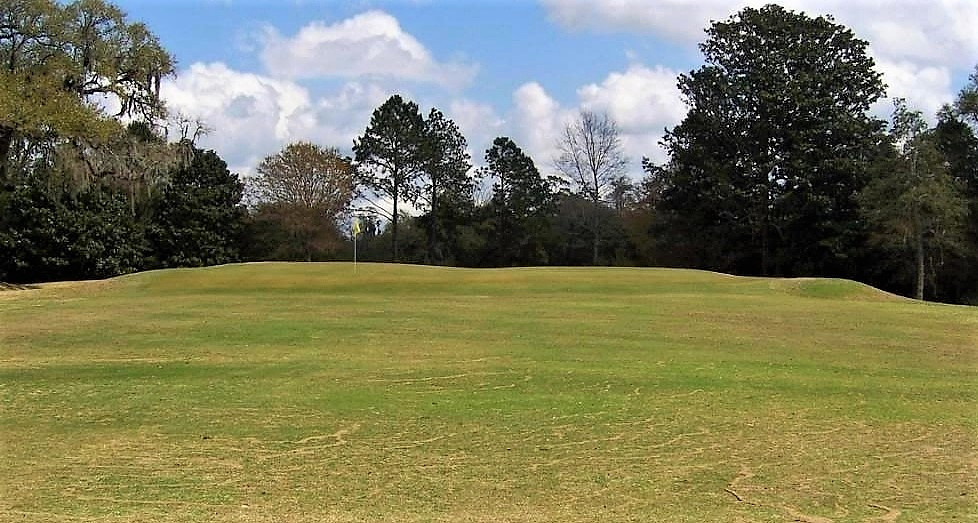
Other than the flourish of bunkers, the only other big difference I can see between YHC and many classic English Heathland courses is the lack of a drivable par 4 or two. The 12th is a shortish par 4, but like the 2nd and 10th, it isn't really drivable....the approach.
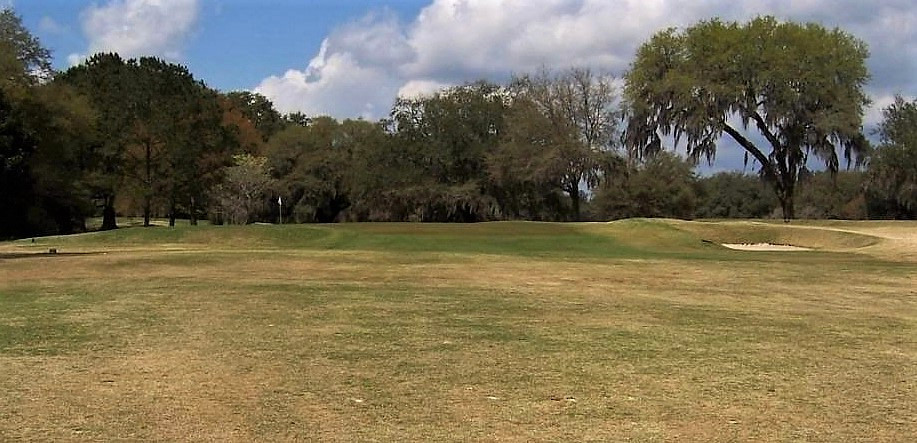
#13 is the third of the par 3s. Its not in the class of #6, but this is a sound hole. A close look at the green reveals the prominent ridge between the bunkers, but this time the false front area is not mowed as green.
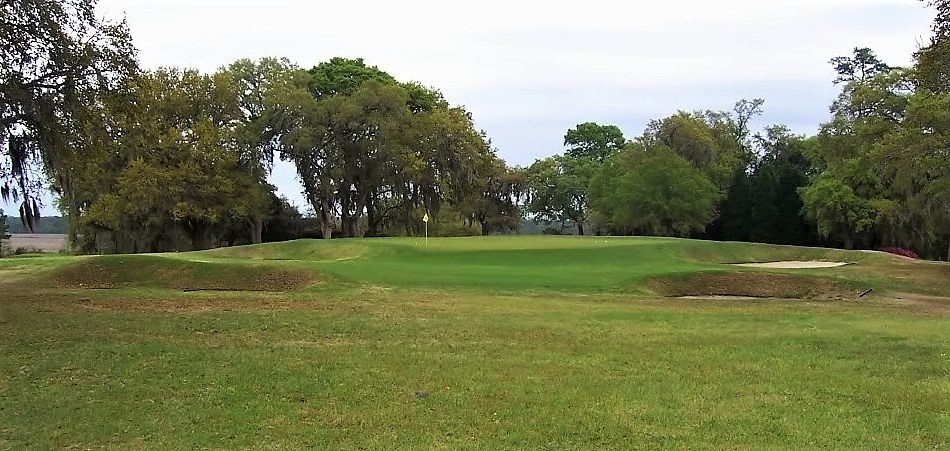

The strategy on the 14th tee, like on most holes at YHC, is quite clear. The previous few holes had relatively benign greens, but that all changes on #14. The green runs viciously to the back left corner. If this hole had more to think about off the tee it would be all-world.
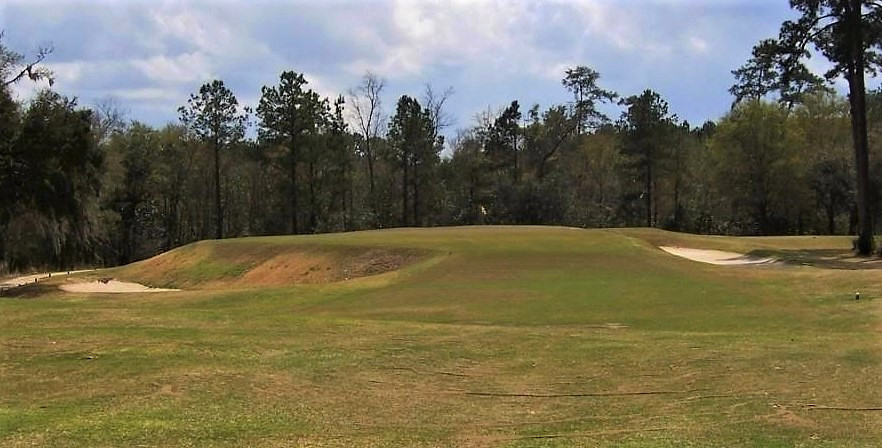

A fairly typical Yeamans bunker left of the green.
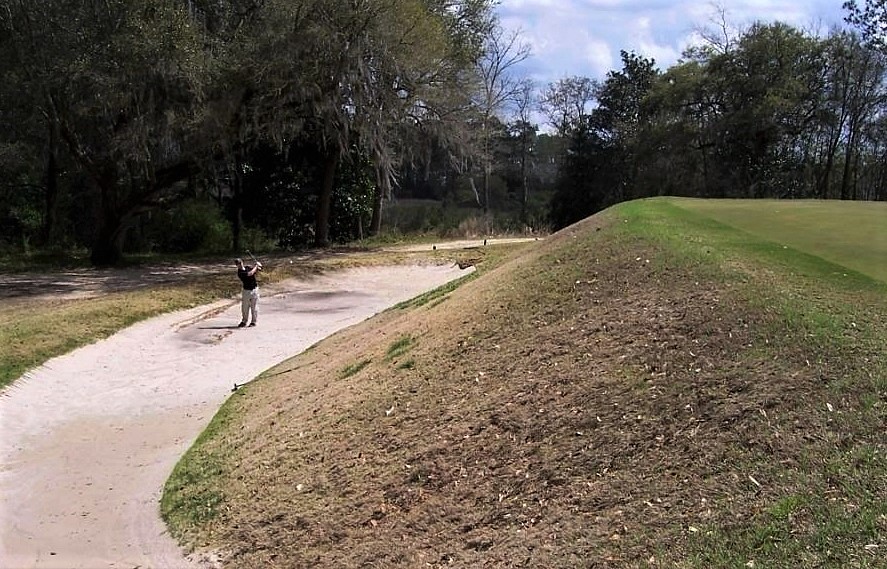
Not since the 2nd have we been asked to shape a tee shot around trees. Being naturally a distrusting person, I thought there were probably sneaky bunkers lurking out of sight right so I tried to hug the tree line. That was a mistake as going right isn't bad at all, the angle of approach isn't the best, but one is safe. Once around the corner we face a raised semi-volcano green. As is nearly always the case, bunkers are right and left. I would surely have liked to see less of this and more grassy areas for recovery. The greens are plenty difficult and don't require such regimented protection.
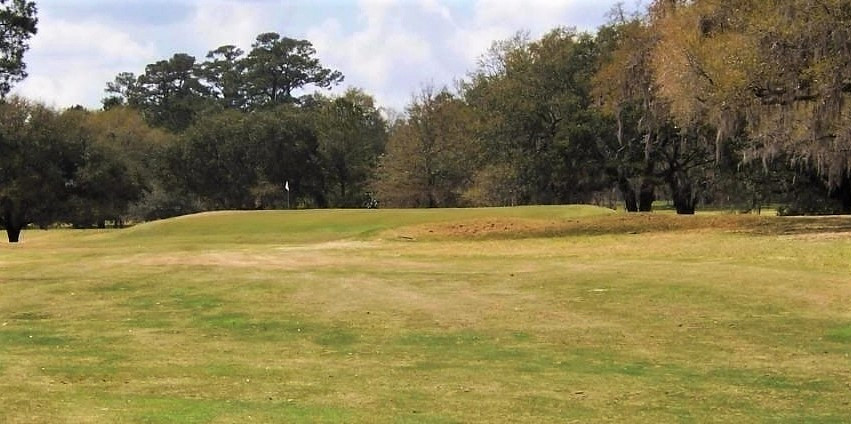
I am not sure what all the fuss is over this Biarritz. This must be a very average example of the type. All it seemed to me was pulling a wood and giving it a whack. IMO a green like this would be better served as a shortish par 4 where the angle needs to be earned rather than given on the tee.
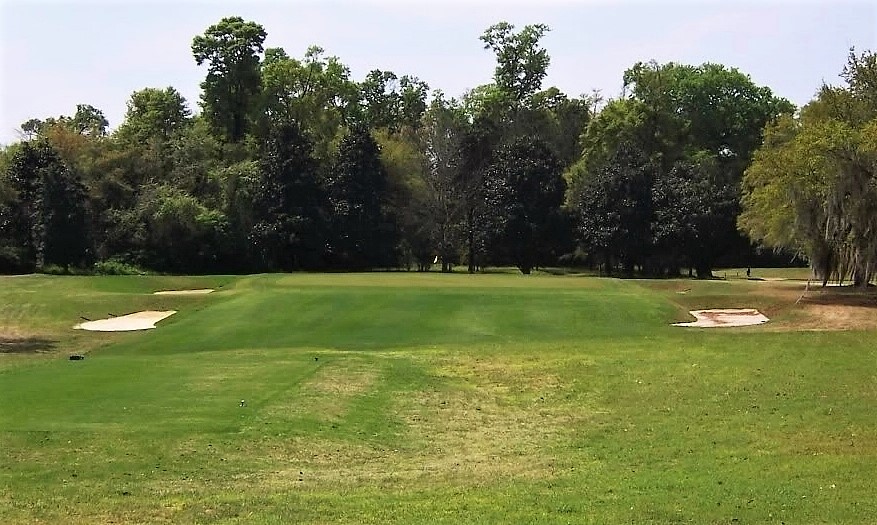
Mind you, the older version of the hole looks far more intimidating. It is also hard to tell if the front plateau is part of the green.

The penultimate hole is one of my favourites on the course and really helps to round out what is a terrific set of par 4s - the real strength of YHC. The drive wants to naturally wander right, but a bunker awaits any pulled tee shot.
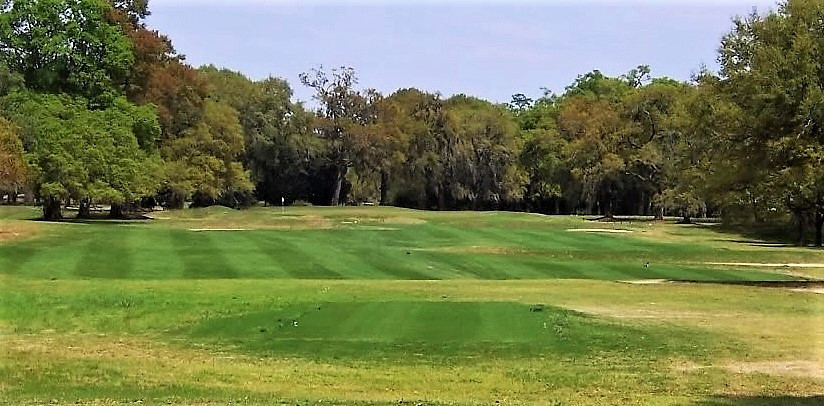
Once again the bunkering obscures the view of the green, but we get a strong sense of general right to left movement.
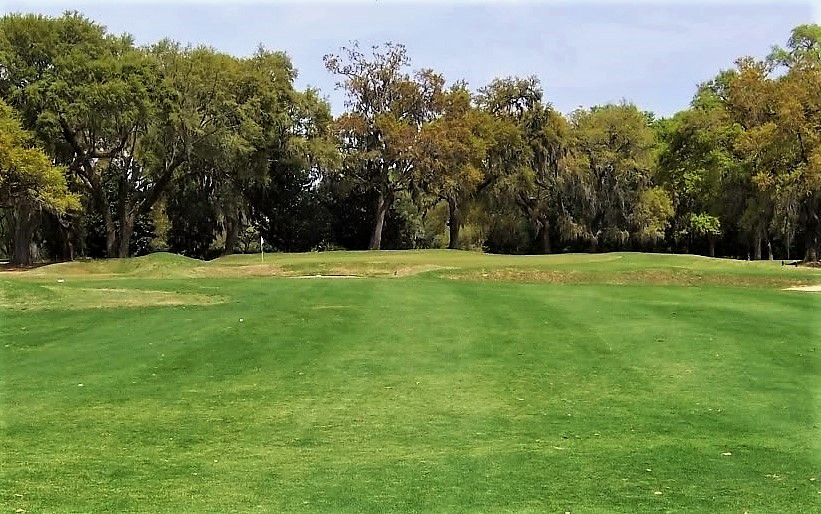

The course finishes with a somewhat reachable par 5. Not a bad hole, but to be honest, its a bit of a disappointment. A good drive between bunkers leaves a straightforward if blind, long approach. Just don't fluff it!
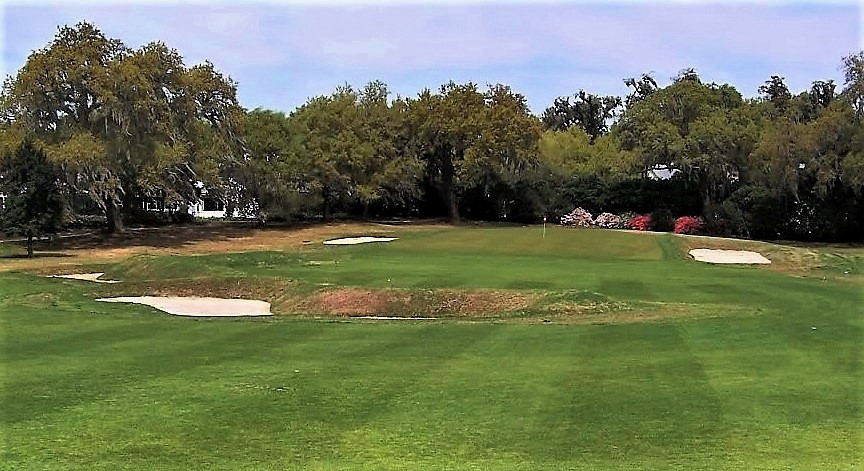

This recent visit confirms my initial opinion that Yeamans is a very good course. I would personally like to see a bit more variety in green sites with less sand being utilized, but I understand that Raynor did his thing and that was that. Despite the lack of a drivable two-shotter, the par 4s are for me the strength of the course. Predictably for older courses, the par 5s are not terribly special though both three-shotters have some elements to keep the player interested if not totally intrigued for the entire length of the hole. To some degree, YHC is better than can be assessed hole by hole. The elegant routing surprisingly never strays too far from the clubhouse and the drive in from the front gate affords superb views of the first and the template Redan and Road holes. YHC has a lot of wonderful features, but my misgivings about the bunkering still hold me back giving the course a higher grade. As after the first visit, there was a twinge of sadness as I drove away because I am sure my opinion of the course would continue to improve with multiple plays, but one never knows if he will ever return. 2010.
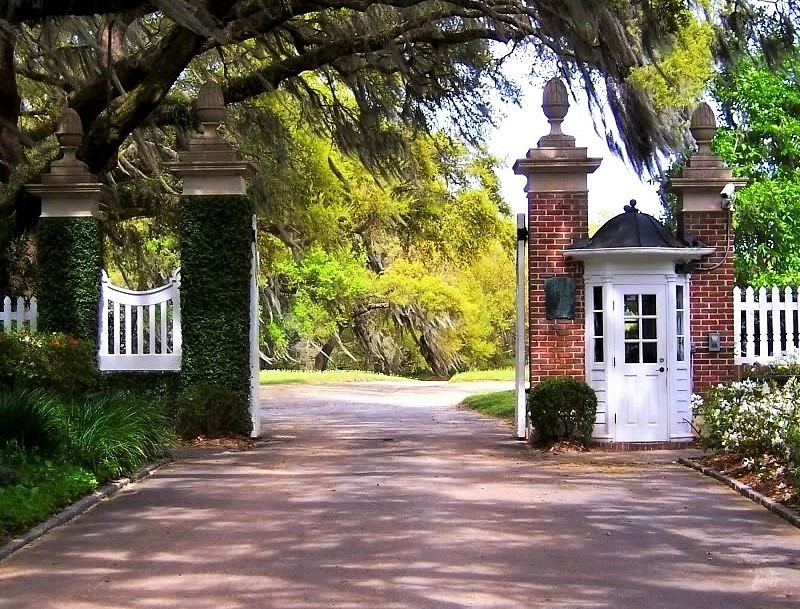
Ciao